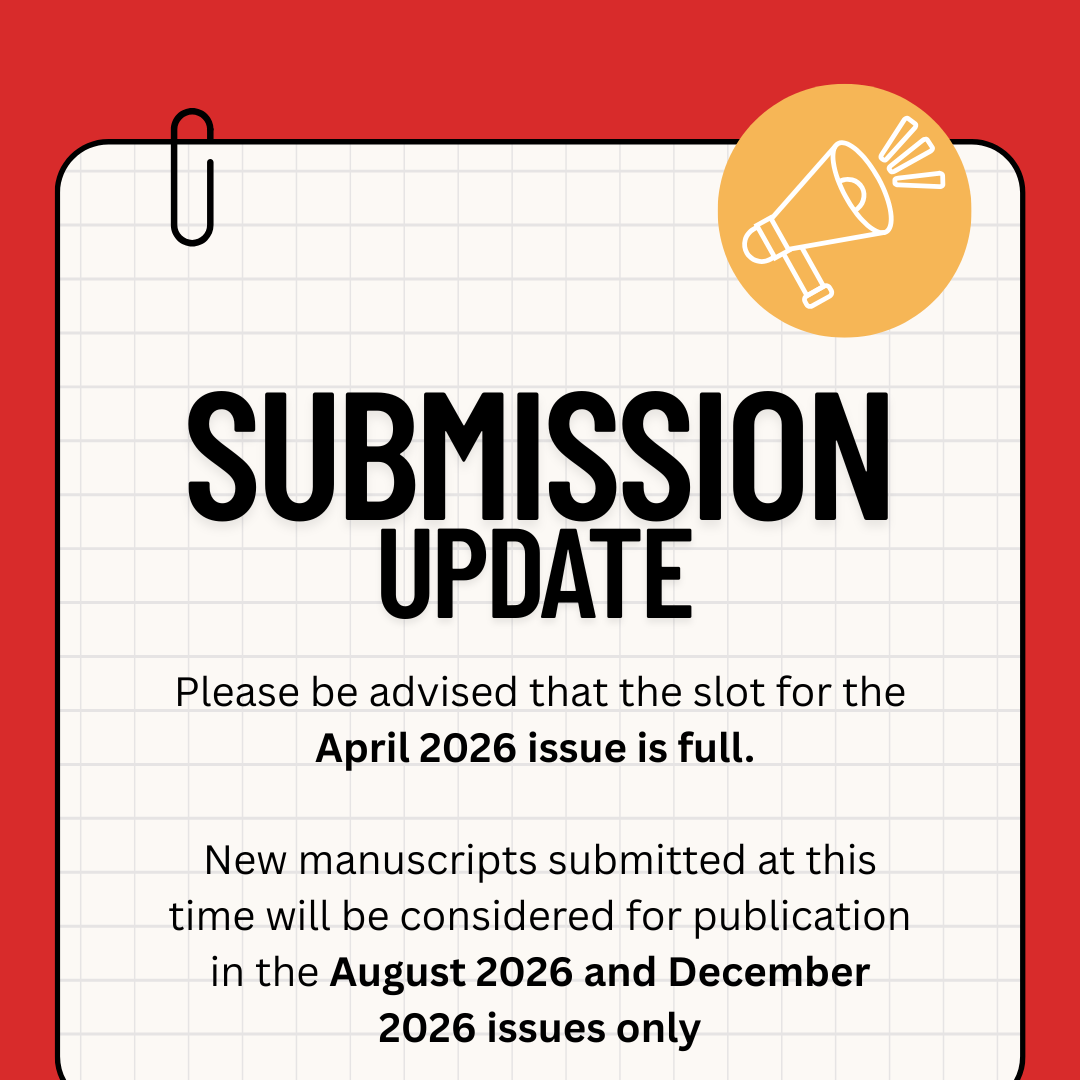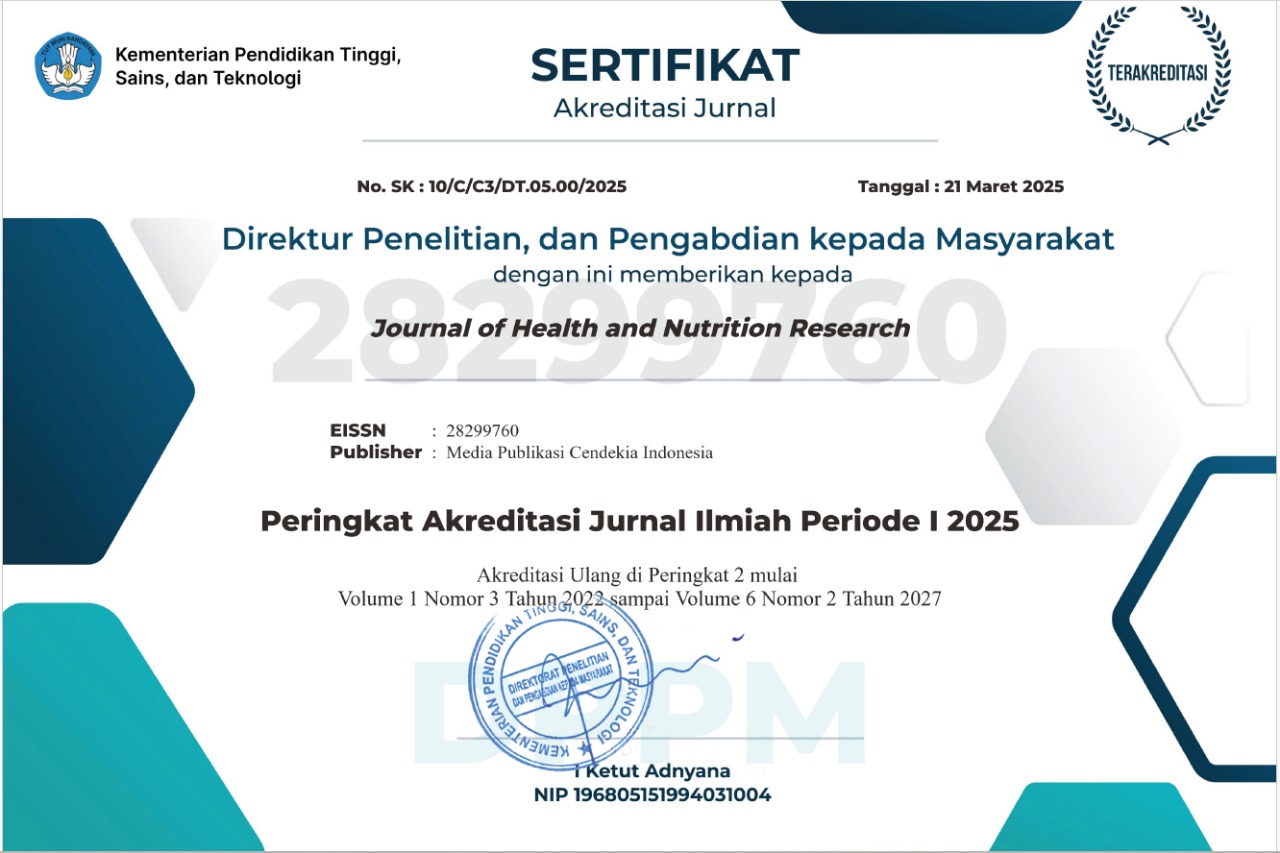Traditional Institutions and Two-Way Communication in Addressing Violence Against Women in Farming Families: A Case Study in Sigi Regency
Keywords:
Farming families, Prevention, Traditional institutions, Violence against womenAbstract
Violence against women is a major public health problem globally and in Indonesia. This study aimed to determine the handling of violence against women in farming families through a two-way communication approach based on traditional institutions in Sigi Regency, Central Sulawesi. This qualitative study employed a two-way communication approach. Key informants included traditional figures (head of the Traditional Institution and several additional informants involved in and knowledgeable about violence against women in farming families, including village heads, hamlet heads, community leaders, women's figures/activists, religious leaders, and traditional leaders in Sigi Regency). The main instrument was an interview guideline, and the data were analyzed using qualitative descriptive analysis. The causes of violence against women in farming families in Sigi Regency, Central Sulawesi Province, were identified as economic problems, patriarchal culture, and education. Impacts experienced by victims included: psychological trauma (frustration, heartache, shame, mental pressure), physical trauma (bruises, wounds), family neglect (lack of support), and separation (divorce). Regarding the prevention of violence against women in farming families, the findings indicate that efforts focused on intervention after violence occurred, rather than proactive prevention. In terms of handling violence, two patterns emerged: initial handling by the family using a familial approach, and subsequent reporting through government channels (such as the village office followed by customary law) if the violence persisted or the familial approach was unsuccessful. Alternatively, some cases were directly reported to the village office without family negotiation
Downloads
References
Stöckl H, Sorenson SB. Violence Against Women as a Global Public Health Issue. Annual Review of Public Health. 2024 May 20;45(Volume 45, 2024):277–94.
Türkkan T, Odaci H. Violence Against Women: A Persistent and Rising Problem. Psikiyatride Güncel Yaklaşımlar. 2024 Jun 30;16(2):210–24.
Roesch E, Amin A, Gupta J, García-Moreno C. Violence against women during covid-19 pandemic restrictions. BMJ. 2020 May 7;m1712.
Nafi TH, Nurtjahyo LI, Kasuma I, Parikesit T, Putra GP. Peran Hukum Adat dalam Penyelesaian Kasus-Kasus Kekerasan terhadap Perempuan di Kupang, Atambua, dan Waingapu. JHP. 2016 Jun 30;46(2):233.
Makhanya MTB. Causes and Consequences of Toxic Masculinity: Can HeForShe Be a Solution for Gender-Based Violence? In: Gender Inequality - Issues, Challenges and New Perspectives [Internet]. IntechOpen; 2023 [cited 2025 Apr 9]. Available from: https://www.intechopen.com/chapters/86766
Rani NP. Penerapan Sanksi Adat Melayu Kerajaan Siak Sri Indrapura Terhadap Kekerasan Dalam Rumah Tangga. Fikri. 2016;1(2):291–314.
Khairil M, Jeganathan CS, Razman MR, Zakaria SZS, Ismail SM. Influence of Legal Literacy and Communication in the Enforcement of Environmental Laws. Information. 2017;20(10):7199–208.
Hajiji. Pemprov Sulteng sebut Kekerasan terhadap perempuan terbanyak di Palu. ANTARA [Internet]. 2020 [cited 2025 Apr 9]; Available from: https://bali.antaranews.com/rilis-pers/1239484/pemprov-sulteng-sebut-kekerasan-terhadap-perempuan-terbanyak-di-palu
Kurniawati E. Faktor Penyebab Terjadinya Kekerasan Dalam Rumah Tangga Dan Upaya Penanggulangannya: Suatu Tinjauan Kriminologis. JATISWARA. 2011;26(3):75–97.
Peterman A, Potts A, O’Donnell M, Thompson K, Shah N, Oertelt-Prigione S, et al. Pandemics and Violence Against Women and Children [Internet]. 2020 [cited 2025 Apr 9]. Available from: https://www.cgdev.org/publication/pandemics-and-violence-against-women-and-children
Galistya TM. Kekerasan Terhadap Perempuan Dan Perceraian Dalam Perspektif Pemberdayaan Perempuan. JDSB. 2020 May 28;21(1):19–27.
Molebila AM, Tallo D, Manu N. Peranan Lembaga Adat dalam Penyelesaian Perkara Tindak Pidana Kekerasan dalam Rumah Tangga di Desa Wolwal Kabupaten Alor. COMSERVA : Jurnal Penelitian dan Pengabdian Masyarakat. 2023 Jun 12;3(02):536–46.
Farid MRA. Kekerasan terhadap Perempuan dalam Ketimpangan Relasi Kuasa: Studi Kasus di Rifka Annisa Women’s Crisis Center. Sawwa J Stud Gend. 2019 Oct 21;14(2):175–90.
Alimi R, Nurwati N. Faktor Penyebab Terjadinya Kekerasan Dalam Rumah Tangga Terhadap Perempuan. jppm. 2021 May 22;2(1):20.
Akhmedshina F. Violence Against Women: A Form Of Discrimination and Human Rights Violations. Mental Enlightenment Scientific-Methodological Journal. 2020 Nov 2;1(1):13–23.
Claudia R. Dampak Psikologis Pengalaman Kekerasan pada Dua Wanita dan Rencana Tindak Lanjut Konseling Individual dengan Pendekatan Cognitive Behavioral Therapy. Jurnal Psiko-Edukasi. 2014;12(2):110–23.
Syafira GA, Kustanti ER. Gambaran Asertivitas Pada Perempuan Yang Pernah Mengalami Kekerasan Dalam Pacaran. Jurnal EMPATI. 2017 Jan 16;6(1):186–98.
Hasneni H. Penyelesaian Dan Penanggulangan Korban Kekerasan Dalam Rumah Tangga Melalui Lembaga Adat Nagari Di Sumatera Barat. J Kafa’ah. 2014 Jun 7;4(1):22.
Taufiq T. Sanksi Hukum Terhadap Pelaku Tindak Kekerasan Terhadap Perempuan dan Anak. JPenaJustisia. 2020 Aug 22;19(1):35–46.
Sholihat N, Falah M, Rosnawanti R, Budiawan H. An Overview Of Cases Of Violence Against Women And Children In Tasikmalaya City. HealthCare Nursing Journal. 2023;5(2):848–54.

Published
How to Cite
Issue
Section
Copyright (c) 2025 Elli Yane Bangkele, Muh Ardi Munir, Sumarni Sumarni

This work is licensed under a Creative Commons Attribution-NonCommercial-ShareAlike 4.0 International License.
Most read articles by the same author(s)
- Selvi A Mangundap, Muh Ardi Munir, Nurdin Rahman, Supirno Supirno, Amyadin Amyadin, The Association Between Parenting, Social Interaction, Social Values, and Adolescent Mental Health: A Cross-Sectional Study in Palu, Indonesia , Journal of Health and Nutrition Research: Vol. 4 No. 2 (2025)


















